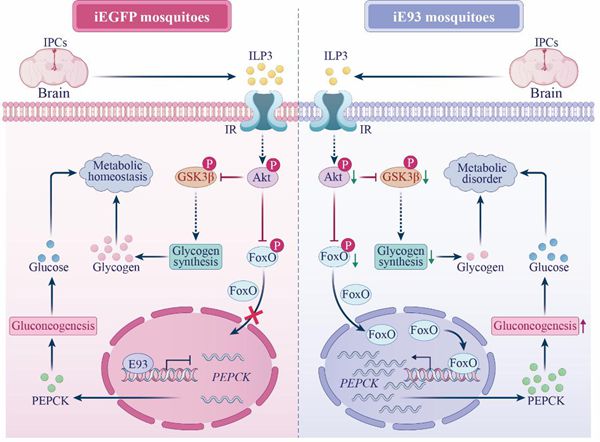Mosquito-borne diseases, including dengue, Zika, and yellow fever, continue to pose a significant global health threat, infecting millions of people annually. Yet current control efforts face growing challenges, driven by rising insecticide resistance and the limited availability of effective vaccines. Therefore, understanding the molecular mechanisms that govern mosquito reproduction has become essential to addressing this public health crisis.
For female mosquitoes to reproduce, they must consume blood, a behavior that triggers dramatic metabolic changes to support egg development and maturation. Until now, however, how mosquitoes coordinate energy use with reproductive processes has remained largely unclear.
To fill this knowledge gap, a research team led by Prof. ZOU Zhen from the Institute of Zoology of the Chinese Academy of Sciences, in collaboration with Prof. Alexander S. Raikhel from the University of California, Riverside, has identified a key gene: E93. This gene plays a central role in maintaining metabolic balance throughout the mosquito's reproductive cycle.
The study shows that E93 regulates metabolism by modulating the insulin signaling pathway and directly repressing the expression of PEPCK genes, which are critical to gluconeogenesis, a process that produces glucose for energy. These actions allow mosquitoes to efficiently manage energy stores after blood feeding, a critical step for successful reproduction.
The study was recently published in the Proceedings of the National Academy of Sciences (PNAS).
This discovery not only deepens scientific understanding of mosquito reproductive biology but also offers new insights to inform strategies for controlling the spread of mosquito-borne diseases.
Furthermore, the researchers noted, the functional domains of the E93 protein are highly conserved across insect species. This means the findings could extend beyond mosquitoes, providing clues for studying metabolic regulation by E93 in a wide range of insects.

The diagram illustrates the mechanism of E93-mediated metabolic homeostasis in the A. aegypti female mosquitoes following a blood meal. (Image by Prof. ZOU Zhen's Lab)






